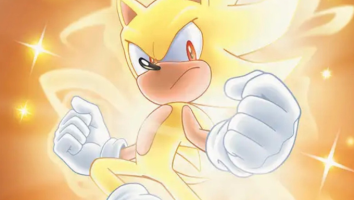At this Sunday’s Daytime Emmy Awards, DreamWorks Animation Television (DWA TV) is up for two trophies in the outstanding main title and graphic design for an animated program category—one for Amazon Prime Video’s The Adventures of Rocky and Bullwinkle and one for Netflix’s Tales of Arcadia: 3Below. This isn’t the first time DreamWorks is in contention for the award, either: At last year’s ceremony, it was nominated for two Netflix series Dinotrux: Supercharged and Trollhunters. Despite being very different shows all airing on different platforms, all of these title sequences do have one thing in common: They all air on SVODs where viewers can easily hit “skip intro” on the bottom left hand side of their screen.
So why does DreamWorks keep dedicating time, money and talent to creating these calling cards—even when the team knows many of the viewers may not see it more than once?
3Below’s executive producer Rodrigo Blaas is very aware that kids can easily pass over an intro and all of the work his team put into it, he actually plans the sequences out in anticipation of viewers likely only ever seeing it once. But he hopes that even if that’s the case, the crew has created a sliver of content that resonates enough experience that it sticks in their heads for years to come.
“If you’ve done a good job of it you’re going to give kids a strong feeling either way,” says Blaas.
DWA TV doesn’t have a mandate for what each opening sequence needs to be—it lets the creators decide—which actually may be why it still has sequences at all, says DWA’s EVP of current series Kelly Kulchak. She points out that most of today’s toon showrunners grew up seeing theme songs and opening sequences, and felt the impact of them.
“So many creators feel like when they get their own shows, they want a theme song. It needs to set up the feeling and the mood, whether it’s the visuals or the song or whatever,” says Kulchak.
Either way, every bit of the show needs to keep kids hooked in. Every opportunity for an audience to step away from the series is a lost opportunity, so DWA is trying to keep kids tuned in many different ways, says Kulchak. This is just one way to keep their eyeballs trained on the screen.
She does definitely still believe in the value of a title sequence though, even going so far as to ask Netflix to drop the skip button from Captain Underpants. The streamer said no, but she hopes viewers will watch it anyways.
Another one of her favorites is the Emmy-nominated 3Below, created by Guillermo del Toro.
“You get an instant feel for the beauty of the animation and the quality of the storytelling and the worlds that we’re going to and from in that series,” says Kulchak. “It manages to capture everything that you want in that quick 30 seconds.”
The process of making a title sequence usually happens about one year into production, when the crew has made three or four episodes and are more familiar with how it will look on screen, says Blaas. Then he lis keto dedicate four to six weeks for the production manager, visual effects supervisor and editor to create the intro.
In the case of 3Below, once the team had finished the intro, and showed it to Blaas and del Toro, everyone felt like it was missing an element. Which is when del Toro offered up the advice, “Why don’t we just have someone say one, two, 3Below.” Electronic music group Crystal Method was creating the sounds for the opening and came back a week later having recorded their own kids saying that phrase.
Those are the callback moments, that Blaas hopes kids remember into the future, even if they only see the opening sequence once and skip it all other episodes.
In contrast, the Rocky & Bullwinkle reboot had a lot of expectations hanging over it. It was an incredibly tricky one to make, says Kulchak. People had a certain idea in their minds about what the show was, and if DWA messed that up in the title sequence, it would be hard to gain audience’s trust back. Instead the team leaned into the old-school spy theme of the show and kept things very simple.
Despite that dreaded (or beloved?) skip-button, SVODs aren’t all bad for opening sequences, says Kulchak. Streamers also gives kids the opportunity to binge-watch shows—and by extension the intro sequences. This may actually be why it’s only streamers nominated in the category this year. If a viewer is watching 13 episodes back-to-back then they’re much more likely to absorb those main titles than if they only saw it once a week for 13 weeks, is her hypothesis.
Now, DreamWorks is experimenting with different formats of title sequences. In general it is shifting towards shorter sequences than that of the 30-second 3Below opening. Instead it’s often just flashing up logos and a quick two bars of music then getting into the show. It even has an unannounced series that won’t have one at all, not even an opening logo.
Want to know more about how platforms and producers are keeping title sequences fresh? Check out yesterday’s article about Amazon.





















